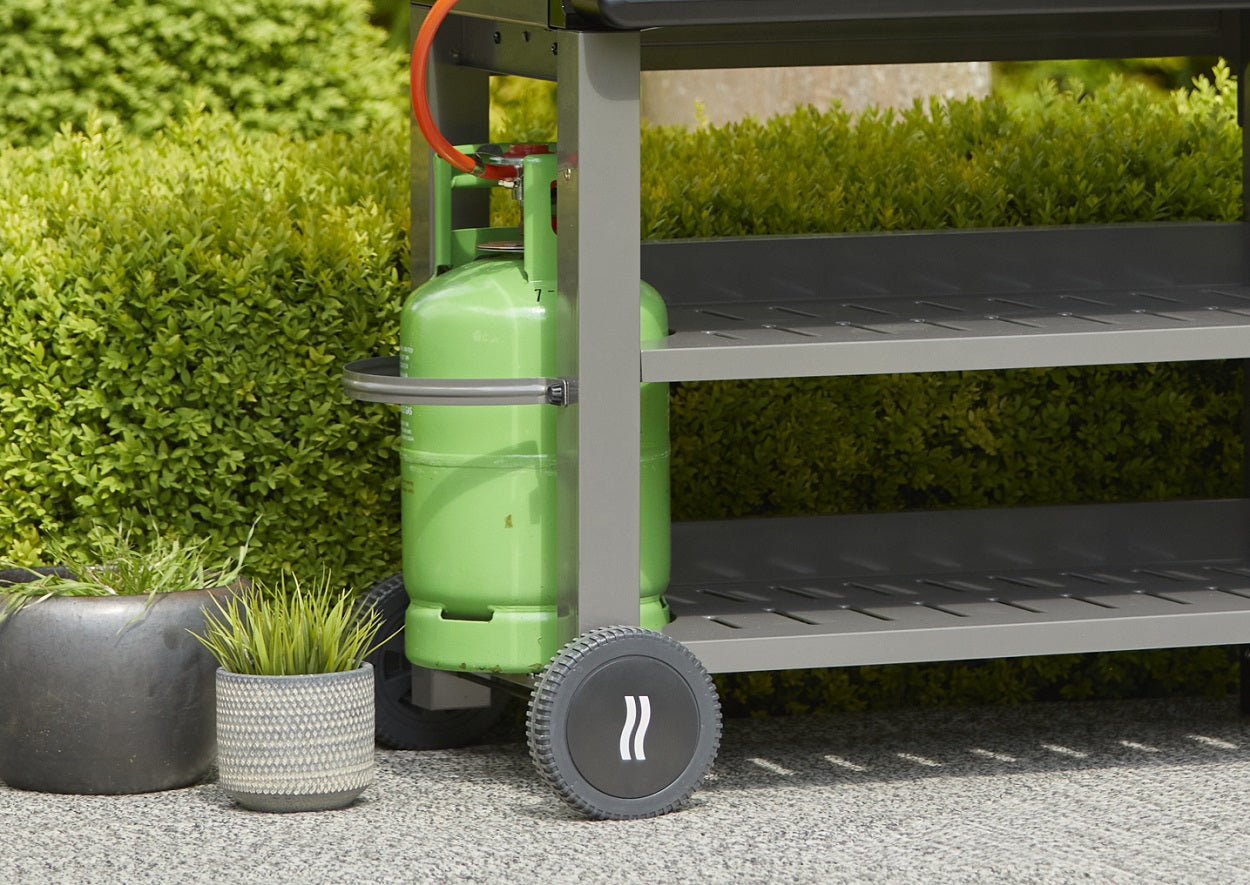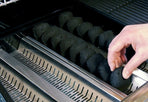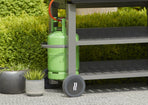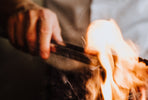Gas bottle safety

Gas safety is paramount when cooking on a Grillstream barbecue. Using the right gas, and ensuring the connection works properly are key.
It’s always recommended that your gas bottle is stored upright, in a well ventilated area and on a flat solid surface.
You must locate the gas bottle to the side of your barbecue, rather than underneath the cooking frame.
This safety measure will ensure that if you do have a problem when cooking – for example a fat fire – that you don’t have to reach under a very hot, lit barbecue to turn off the gas cylinder. (The exception to this is if you own the Island model, where the gas bottle is stored in the cabinet to the left of the frame).
There are two main suppliers of gas in the UK, they are Calor and Flogas. Please adhere to the safety instructions of your particular gas supplier.
Types of Gas
There are different types of gas available to buy from all major hardware stores. We recommend using Propane on all Grillstream barbecues as this will burn hotter than Butane in the UK’s mild climate.
Also note that your barbecue comes with a 27mm clip-on regulator so you will need a suitable gas bottle that takes this fitting. Always use a regulator when using a gas bottle.
Gas bottles come in a variety of sizes. We recommend a minimum of 5kg for 2 and 3 Burner models and a minimum of 10kg for 4 Burner and above. The below brands are currently compatible with Grillstream barbecues but please check with your retailer if you are still unsure:
Calor Patio Gas 5kg & 13kg
Flogas Gaslight 5kg & 10kg
Flogas Leisure Gas 11kg
How to connect your Gas
Your BBQ is supplied with a hose and 27mm clip-on regulator. This comes pre-attached to your barbecue for extra safety but will still require you to perform a regular gas leak check.
Before connecting to your gas cylinder, inspect the hose, its fittings and rubber seals. If there is any sign of cracking, splitting or wear, have the hose replaced - while in use, keep the hose unobstructed and free of kinks and twisting. Any time that you are connecting the gas connections – for example if replacing the regulator or connecting the Side Burner, the connection should be tightened with a spanner.
Take care not to over tighten the joints. To attach your regulator to your gas bottle simply position over the gas nozzle at the top of the bottle and push down firmly.
To turn the regulator on, turn the black switch upwards so it is in a vertical position. To switch off (for when not in use) rotate the switch back to the horizontal position.
When to perform a Gas Leak Check
NOTE - DO NOT test for gas leaks with an open flame. If you smell gas, turn off at the source.
1 Before using your barbecue for the first time.
2 Whenever you switch to a new gas cylinder.
3 After a prolonged period of non-use e.g. over the winter months.
How to perform a Gas Leak Check
To check for a leak, first ensure that all of the burners on the barbecue are in the OFF position before turning on your gas at the regulator. Brush a soapy solution of one part washing up liquid and one part water to all gas connections.
If you can see bubbles expanding, this indicates a leak. Tighten or repair as necessary, and repeat until there are no bubbles. Under no circumstances should a naked flame be used to check for leaks - if a gas odour is present and no leaks can be found, do not use the barbecue.
Turn the gas off at the source, disconnect the hose and immediately contact your barbecue dealer or place of purchase for assistance. Check out our assembly video channel to see a Gas Leak check being performed.
Featured Articles

January 05, 2024
Cooking with your Grillstream
One of the big problems a lot of people face when barbecuing is flare-ups. This is when fats and mea...

January 05, 2024
Charcoal for the hybrid system
We always recommend using Charcoal briquettes in the hybrid system as they provide a nice, long, eve...

January 05, 2024
Gas bottle safety
Gas safety is paramount when cooking on a Grillstream barbecue. Using the right gas, and ensuring th...

January 05, 2024
Fat fires
Fat fires and flare ups are a risk when barbecuing if the barbecue has not been maintained or is not...